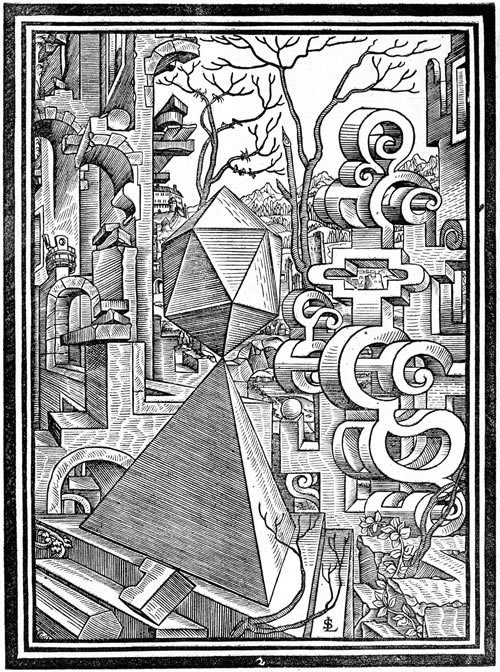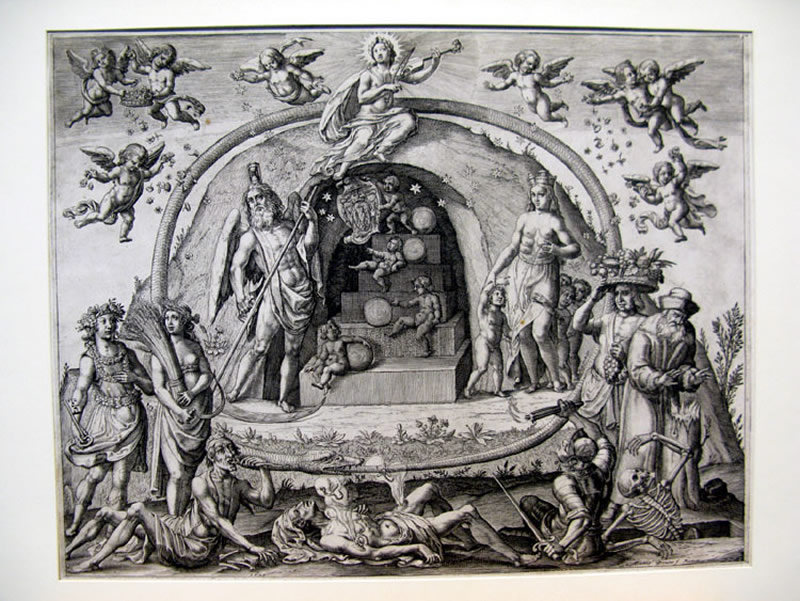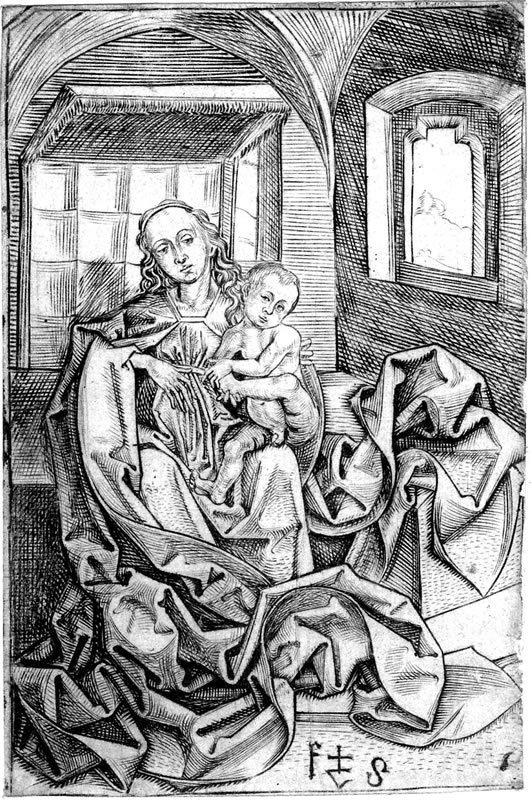Lorenz Stör is best known for the volume Geometria et Perspectiva, Augsburg 1567, comprising surreal images of polyhedra in landscapes of ruins “useful to cabinetmakers working ...

The eleven following woodcuts showcase a fantastical realm of weird strapwork ornament and complex geometric objects teetering within an unpopulated landscape of overgrown ruined buildings, redundant broken arches, stairs and columns. Stör is clearly a highly original artist in the vein of Wenzel Jamnitzer, but also a forerunner to M.C. Escher.
As well as the Geometria et Perspectiva woodcuts a group of others emerged in an auction held in 1997 no doubt from a similar treatise. Some of the prints were printed in colours and green and grey impressions are known. In addition there is a light brown-coloured print, a touched working proof with some outlines clarified in pen and brown ink in the Herzog August Bibliothek, Wolfenbuüttel.
The oeuvre of Niklas Stör includes striking depictions of German soldiers, the notoriously dissolute and flamboyantly attired Landsknechte and Ottoman Turkish soldiers, belonging to two series dating to around 1530 by Sebald Beham, Peter Flötner and Erhard Schön.
In 2010 the Museum Boijmans van Beuningen in Rotterdam acquired nearly forty of these rare hand-coloured woodcuts in fresh condition. The series of portraits of the Holy Roman Emperor Charles V (Kaiser Karl V) and the seven Electors, woodcuts with handcolour surviving in impressions from Gotha, make an interesting comparison to the imposing portrayals of the ancient Kings Eusterwon and Gambrivius from the book by Burkard Waldis, Ursprung und Herkumen der zwölff ersten alten Könige und Fürsten Deutscher Nation, Nuremberg 1543. The wonderful collection in Gotha has been catalogued in the forthcoming Fliegende Blätter : Die Sammlung der Einblattholzschnitte des 15. und 16. Jahrhunderts der Stiftung Schloss Friedenstein Gotha by Bernd Schäfer, Ulrike Eydinger and Matthias Rekow.
The Italianate-German artist Johann Christoph Storer has been extensively studied by Sibylle Appuhn-Radtke. He was a draughtsman and painter, occasional etcher and designer of thesis prints engraved by the usual suspects the Kilians and Matthäus Kuüsel in Augsburg. Storer worked in Milan about 1639-40, but by 1652 he returned to his native Constance (Konstanz) and worked throughout south Germany decorating churches.
Compiled by Dieter Beaujean
Edited by Simon Turner



